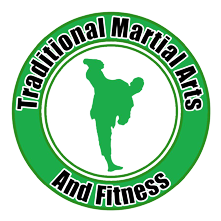Karate Terminology
Knowing the Karate terminology is essential to communicate effectively with your instructor as well as fellow practitioners. Karate terminology is used to describe different techniques, positions, and movements that are used in karate. By knowing the proper terminology, you will be able to understand instructions from your instructor and communicate with your peers more effectively. Additionally, learning the terminology will help you to better understand the history and culture of karate. Karate is a martial art with a rich history and learning the terminology associated with it can help you appreciate and understand the art form more deeply. Overall, knowing the karate terminology is an important aspect of learning and practicing karate.
General Karate Terms you should know:
|
Japanese Term |
Pronunciation |
English |
|
Karate |
Kah-rah-tey |
Empty Hand |
|
Karateka |
Kah-rah-tey-ka |
Practitioner of Karate |
|
Sensei |
Sen-say |
Teacher |
|
Sempai |
Sem-pay |
Senior student |
|
Shihan |
Shee-han |
Master Instructor |
|
Gi |
Gi |
Uniform |
|
Obi |
O-bee |
Karate belt |
|
Dojo |
Doe-joe |
Training hall |
|
Rei |
Rey |
Bow / sign of respect |
|
Shomen-Ni-Rei |
show-men-ni-rey |
Bow to the front of the dojo |
|
Sensei-Ni-Rei |
Sen-say-ni-rey |
Bow to the teacher |
|
Sempai-Ni-Rei |
Sem-pay-ni-rey |
Bow to the senior student |
|
Otagai-Ni-Rai |
Ota-gay-ni-rey |
Bow to each other |
|
Oss/Osu |
O-ss |
Acknowledgment – Greeting |
|
Seiza |
Say-zah |
Kneeling position |
|
Kata |
Kah-tah |
Training Sequence or Form |
|
Kihon |
Key-hon |
Basic training of techniques |
|
Kumite |
Koo-mi-teh |
Sparring |
|
Bunkai |
Boon-kay |
Application of kata technique |
|
Kiai |
Key-eye |
Spirit shout |
|
Yame |
Yah-may |
Stop/finish |
|
Yoi |
Yoy |
Ready position |
|
Hajime |
Ha-jim-ey |
Start |
|
Mawatte |
Mah-wah-teh |
Turn around |
|
Kamae |
Ka-may |
Get into position/prepare |
|
Matte |
Ma-tay |
Wait |
|
Kime |
Key-may |
Focus of power |
|
Gedan |
Gay-dahn |
Lower level of body |
|
Chudan |
Chew-dahn |
Chest area / middle level of the body |
|
Jodan |
Joe-dahn |
Upprt level / Face area |
|
Kyu |
Key-ou |
Grades 8 to 1 (all color belts) |
|
Dan |
Daan |
Black belt ranks |
|
Shomen |
Show-men |
Squar facing – facing the front |
|
Hanmi |
Han-mee |
Side facing |
Numbers
In karate, no matter which country you practice in, counting is always done using Japanese numbers. Most only use numbers from 1 to 10.
|
Japanese Term |
Pronunciation |
English |
|
Ichi |
I-chi |
One |
|
Ni |
Ni |
Two |
|
San |
Sawn |
Three |
|
Chi |
Shee |
Four |
|
Go |
Go |
Five |
|
Roku |
Row-koo |
Six |
|
Shichi |
See-chee |
Seven |
|
Hachi |
Hah-chee |
Eight |
|
Ku |
Koo |
Nine |
|
Ju |
Joo |
Ten |
These are just the basic terminology that you must know. Depending on the dojo that you practice at, they might use more terms or just a few of them. Some dojos prefer the more traditional methods and use more of the Japanese culture and words and some dojos use the English translations of the terms.
In addition to the above basic terms, each technique also has it’s own terminology and all the Katas also have their own name with a meaning behind it.
But don’t get overwhelmed by all these new words, you will not be quizzed on them on your 1st day (or ever). You don’t have to learn Japanese in order to practice Karate. However, as you practice and progress in your Karate journey, you will get familiar with them through repetition and before you know it, you will be using them all the time too.
If you’re ready to start your journey in learning Karate, and learn some cool Japanese terms in the process contact us today.
